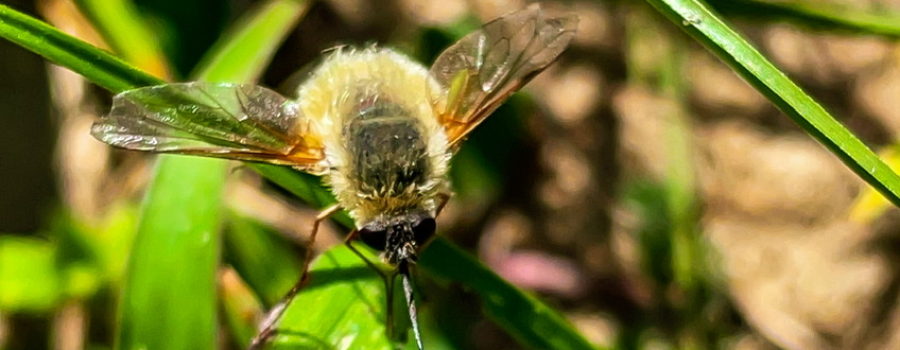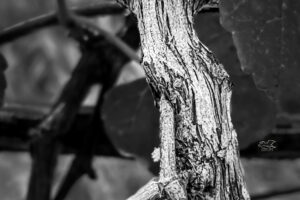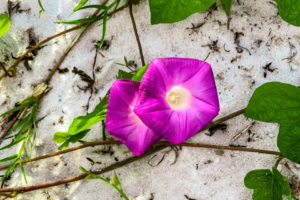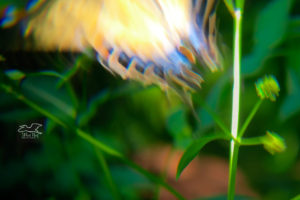The Grasshopper Bee Fly is a Wonderful Pollinator

The season for pollinators is almost gone, even down here in Florida, so I was actually surprised to find this grasshopper bee fly buzzing around the few remaining blackjack flowers last week. I was out in the blackjacks looking for an envelope that I had dropped in the yard. I have one dog who will steal anything that has my scent, and carry it off to later leave it somewhere. The blackjack patch is one of his favorite places to leave things (of course. It’s hard for me to find them there!). While I was looking around, I heard a very loud buzzing not far from me. When I looked over I thought it was a bumblebee at first, but it seemed speedy, even for a bumblebee. As I watched it and followed it trying to get some pictures, I realized that it was a grasshopper bee fly (Systoechus vulgaris).

Many bee flies look very much like bees at a glance. Many of them have coloring that resembles bees and most of them are covered in a thick coat of hair like some bees such as bumblebees. Like bees, they tend to make a buzzing noise when they fly and they tend to fly quickly, but if you look more closely there are several easily distinguishable differences. The most noticeable is that bee flies have a long, straight proboscis that allows them to drink nectar from flowers with long necks. The long proboscis plus the fact that bee flies are very agile fliers (even more so than bees) allows them to actually hover over a flower rather than having to land like a bee does. Even though this method of feeding keeps bee flies from picking up as much pollen as bees do, their great speed and resulting high metabolic needs has them visiting many more flowers than bees. Because of this, bee flies tend to be equal to most bees as pollinators. If you do happen to see a bee fly resting, another notable difference between bees and bee flies is that bee flies have only one pair of wings rather than the two pairs that bees have. Bee flies also have longer, thinner legs than bees, and bee flies have much shorter antennas.

The grasshopper bee fly is pretty common in much of the United States, ranging from Massachusetts to Oregon, and as far south as California, Arizona, and Georgia. That was another reason that I was surprised to see a grasshopper bee fly. They do actually occur here in Florida, but they are relatively uncommon. I’m much more familiar with some of the smaller bee flies like the dotted bee fly. Most bee flies are parasitic on other types of insects, especially ground nesting solitary bees and wasps. The female bee fly will lay her egg near the entrance to the underground nest. When the egg hatches, the larval bee fly will go into the nest and consume the supplies that the female bee has set aside for her young. When the supplies are gone, it then feeds on the bee larvae. Some types of bee flies do parasitize other types of insect eggs and larvae including those of beetles and in this case grasshoppers (hence the name).
Photographing the bee flies definitely provides the photographer with a challenge. Not only are they able to hover, but they are also able to turn on a dime and can quickly accelerate and decelerate. Following this little guy turned out to be a nearly impossible task. Instead, it quickly became apparent that patience was a much better strategy. Still the vast majority of the images I shot were blurry or out of focus. Even though I didn’t get many great shots, I did find watching the bee fly fascinating, so I hope to see more of them next year when spring rolls around.
Do you like beautiful nature photography and artwork? Do you like interesting and engaging nature and animal related content? If you answered yes, then this blog is for you! Subscribe and see for yourself! It’s easy and free!





Recent Comments